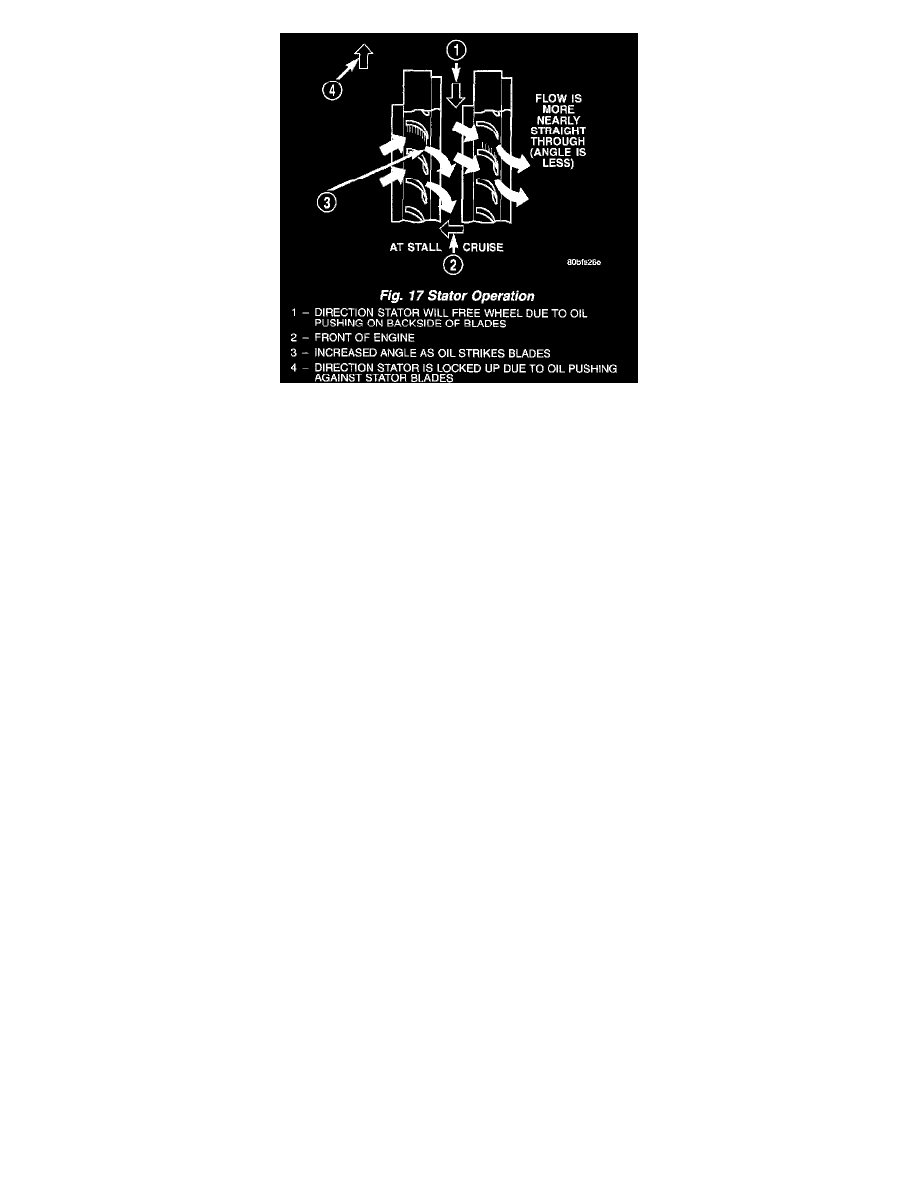RAM 3500 Truck 4WD V8-5.9L VIN Z LDC (2000)

Fig. 17
Torque multiplication is achieved by locking the stator's over-running clutch to its shaft (Fig. 17). Under stall conditions (the turbine is stationary), the
oil leaving the turbine blades strikes the face of the stator blades and tries to rotate them in a counter- clockwise direction. When this happens the
over-running clutch of the stator locks and holds the stator from rotating. With the stator locked, the oil strikes the stator blades and is redirected into a
"helping" direction before it enters the impeller. This circulation of oil from impeller to turbine, turbine to stator, and stator to impeller, can produce a
maximum torque multiplication of about 2.4:1. As the turbine begins to match the speed of the impeller, the fluid that was hitting the stator in such as
way as to cause it to lock-up is no longer doing so. In this condition of operation, the stator begins to free wheel and the converter acts as a fluid
coupling.
TORQUE CONVERTER CLUTCH (TCC)
In a standard torque converter, the impeller and turbine are rotating at about the same speed and the stator is freewheeling, providing no torque
multiplication. By applying the turbine's piston to the front cover's friction material, a total converter engagement can be obtained. The result of this
engagement is a direct 1:1 mechanical link between the engine and the transmission.
Converter clutch engagement in third or fourth gear range is controlled by sensor inputs to the powertrain control module. Inputs that determine clutch
engagement are: coolant temperature, engine rpm, vehicle speed, throttle position, and manifold vacuum. The torque converter clutch is engaged by
the clutch solenoid on the valve body. The clutch can be engaged in third and fourth gear ranges depending on overdrive control switch position. If the
overdrive control switch is in the normal ON position, the clutch will engage after the shift to fourth gear, and above approximately 72 km/h (45 mph)
. If the control switch is in the OFF position, the clutch will engage after the shift to third gear, at approximately 56 km/h (35 mph) at light throttle.
